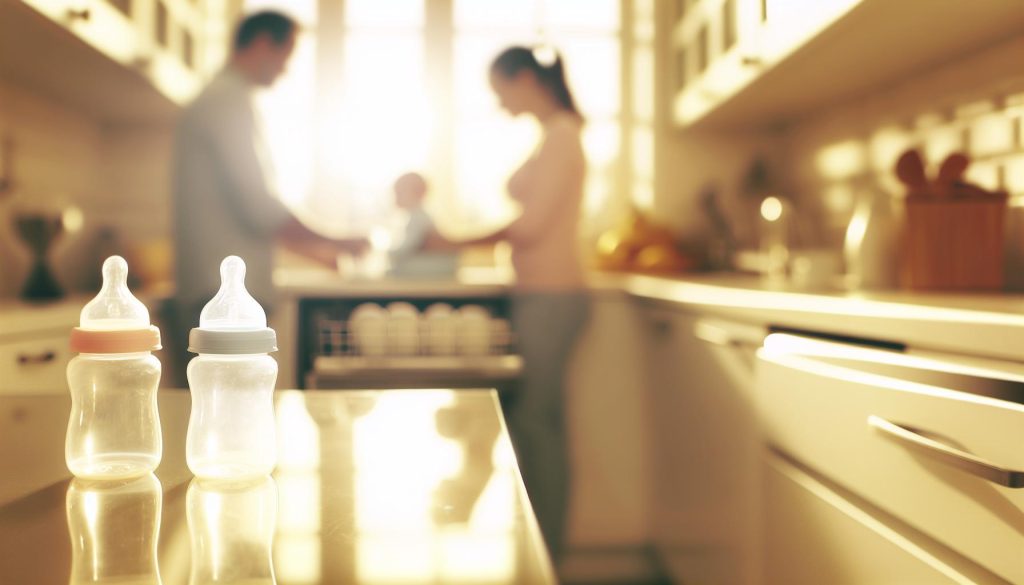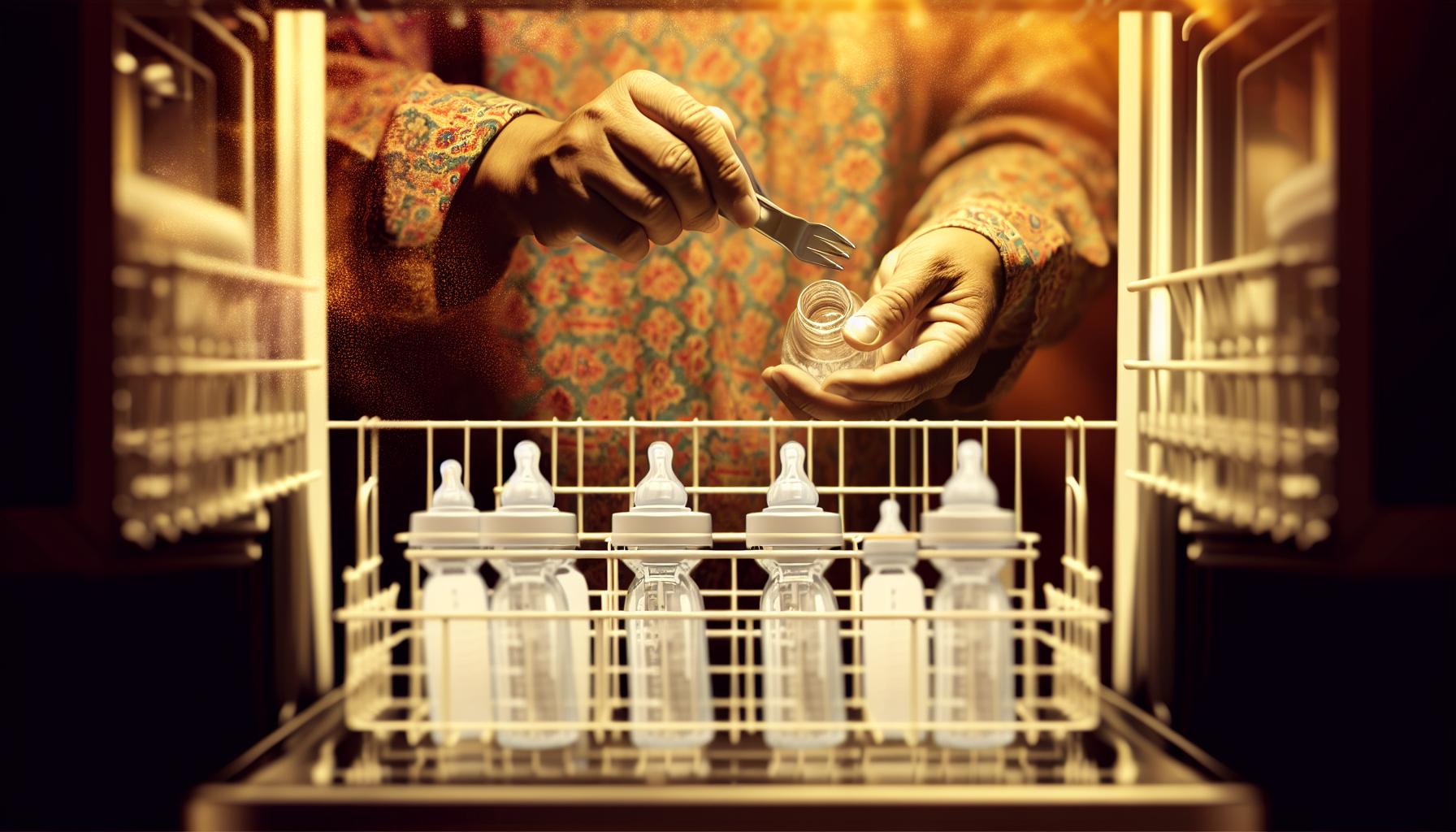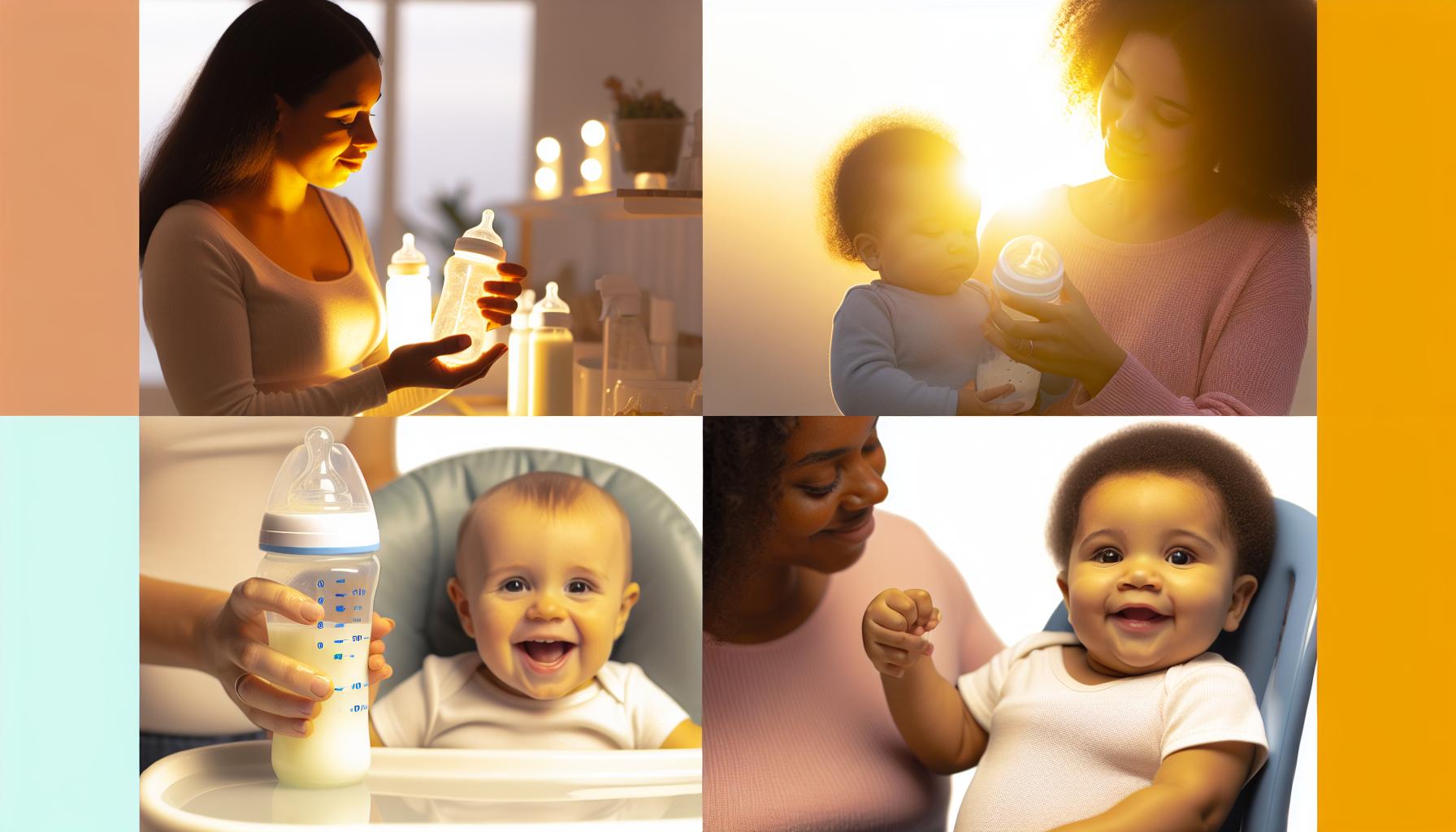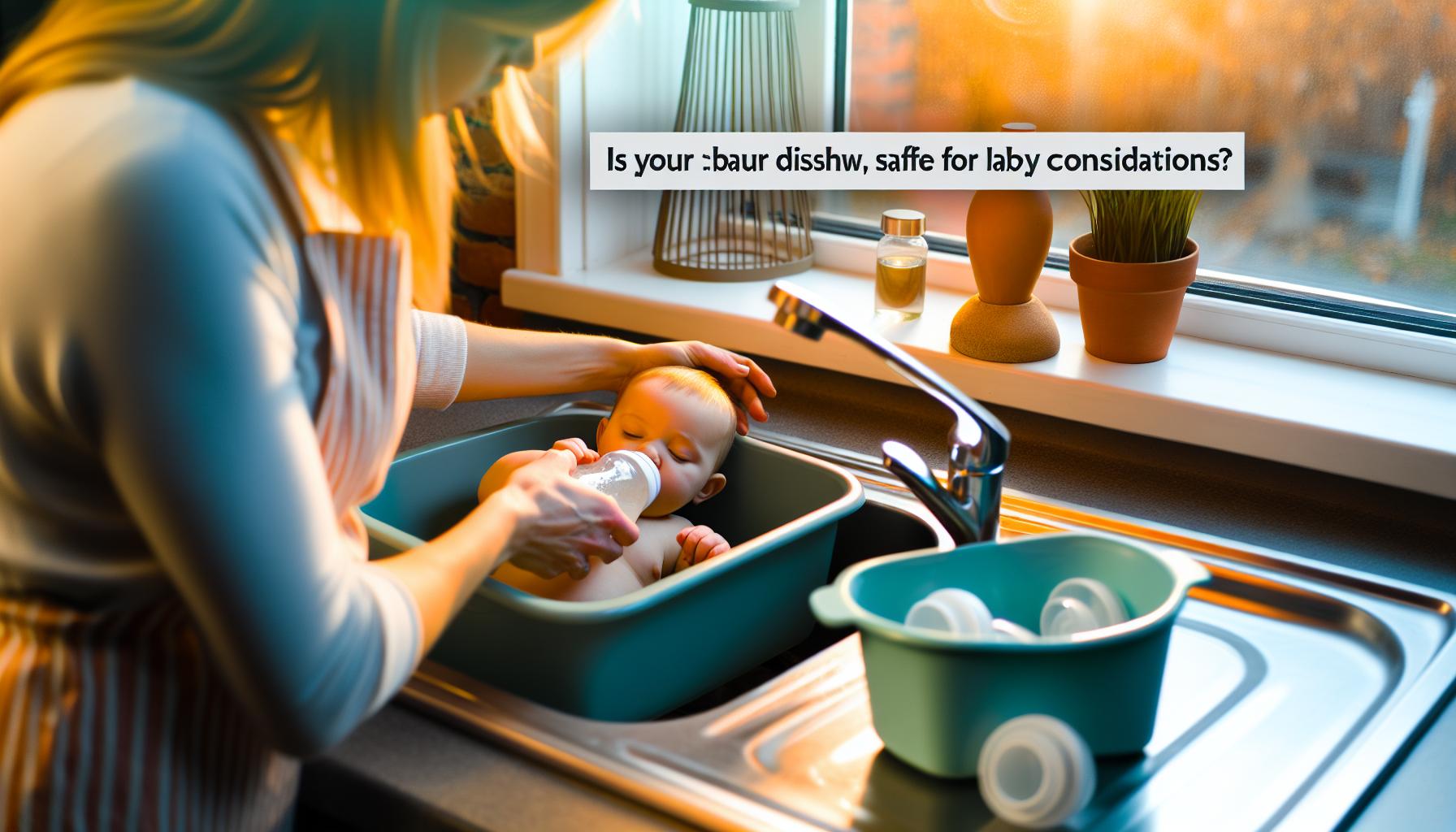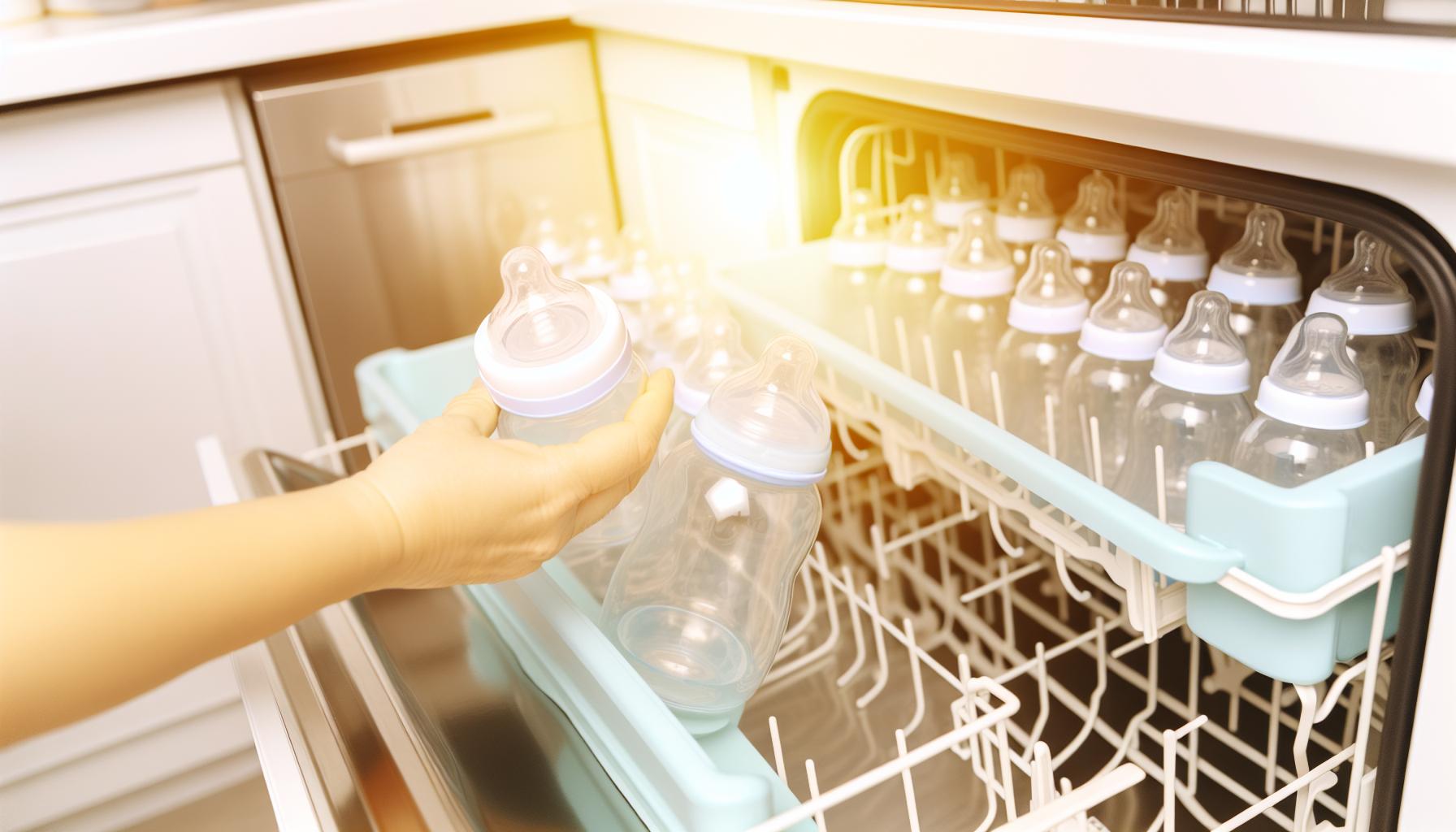Cleaning baby bottles can often be a juggling act for parents trying to maintain hygiene while also managing their busy schedules. with many parents relying on dishwashers for convenience, understanding the safety of washing these essential items in a machine is crucial.This guide explores effective safety tips to ensure your baby bottles remain clean and free from harmful chemicals.
Understanding the Importance of Proper Bottle Hygiene
Ensuring that baby bottles are thoroughly cleaned and sanitized is not just a mundane task; it plays a critical role in safeguarding your little one’s health. Did you know that over 100 different strains of bacteria can thrive in improperly cleaned bottles? These harmful microorganisms can pose serious health risks, especially to infants whose immune systems are still developing. therefore, understanding the significance of proper bottle hygiene cannot be understated, especially when utilizing methods such as washing baby bottles in the dishwasher.
When bottles are not washed effectively, residue from milk or formula can lead to the growth of bacteria and mold, which might remain undetected.To combat this, here are a few vital tips for maintaining proper bottle hygiene:
- Use hot, soapy water: Always start by rinsing the bottle with warm water to remove any leftover liquid. Then, wash with hot, soapy water, ensuring that all surfaces, including nipples and caps, are scrubbed.
- Consider sterilization: Depending on your baby’s age and health, sterilizing bottles regularly is advisable. this can be achieved using a sterilizer or in the dishwasher on a sanitizing cycle.
- Avoid bacteria buildup: After washing, allow bottles to air-dry entirely to prevent bacteria from thriving in damp environments.
Incorporating proper bottle hygiene practices,such as washing baby bottles in the dishwasher with safe and effective methods,can make a significant difference in your baby’s well-being. Recent guidelines suggest that using the top rack of the dishwasher, utilizing a high-temperature washing setting, and ensuring bottles are securely placed to avoid movement will further enhance sanitation. By taking these precautions, you not only ensure a clean feeding surroundings for your baby but also contribute to their overall health and development, allowing them to thrive in their early months.
Furthermore, always inspect bottles for signs of wear or damage, as tiny scratches can harbor bacteria. Regularly replacing them is essential to maintaining hygiene. Remember, cleaning baby bottles is not merely about aesthetics; it’s a fundamental practice that sets the foundation for your child’s health.
is Your Dishwasher Safe for Baby Bottles? Key Considerations
Understanding the Safety of your Dishwasher for Baby Bottles
When it comes to the care of your baby’s feeding essentials, ensuring proper hygiene is paramount. One common question among parents is whether their dishwasher is safe for cleaning baby bottles. In general, most modern baby bottles are designed to be dishwasher-safe; however, it’s essential to check the manufacturer’s instructions to confirm this before proceeding. Placing bottles on the top rack is crucial, as this helps to protect them from the harsher heat generated by the dishwasher’s bottom heating element, which can deform bottles made from materials like plastic [1].
When washing baby bottles in the dishwasher, consider the following factors to enhance safety and cleanliness:
- Material Compatibility: Ensure that the materials used for your baby bottles are indeed dishwasher-safe. Look for labels or manufacturer guidelines that specify suitable cleaning methods.
- Detergent Choice: Use a mild, effective dishwasher detergent. Some standard detergents may leave residues or cause allergic reactions in sensitive babies. Opt for those labeled safe for baby items [3].
- Pre-Cleaning: Rinse bottles and nipples with warm water before placing them in the dishwasher to remove milk residue that could hamper cleaning [2].
- Washing with Other Items: Avoid washing baby bottles with heavily soiled dishes or those that contain food particles to prevent cross-contamination.
Extra Precautions
for parents who want to ensure top-notch cleanliness, it might potentially be beneficial to sterilize bottles after washing them in the dishwasher, especially for newborns and infants under three months old. While dishwashers generally clean effectively, they may not fully sterilize, so using a separate sterilization device can provide extra peace of mind [3].
By following these precautions, you can confidently utilize your dishwasher for washing baby bottles, ensuring that your baby’s feeding gear remains safe, clean, and ready for use.
Choosing the Right Dishwasher Settings for Baby Items
Optimal Dishwasher Settings for Cleaning Baby Bottles
When it comes to cleaning baby bottles, the right dishwasher settings can make all the difference in ensuring they are spotless and safe for your little one. Many parents may wonder: how hot is too hot? the ideal setting for washing baby bottles involves high temperatures combined with sanitation features. Selecting a wash cycle that reaches around 140°F (60°C) not only helps to eliminate stubborn residues but also ensures that harmful bacteria are effectively killed, making it a crucial part of the process when washing baby bottles in the dishwasher.
To enhance the safety and cleanliness of baby items, consider the following key settings:
- High-Temperature Wash: This setting promotes deeper cleaning and is essential for bottles to be free from milk residue.
- Sanitize Option: If your dishwasher has a sanitize setting, make sure to use it.This option further increases water temperature and is designed to eliminate 99.9% of bacteria.
- Gentle Cycle for Sensitive Materials: If your bottles are made from certain plastics or materials prone to warping, choose a gentle or delicate cycle to avoid damage while still providing thorough cleaning.
Additional Tips for Effective Cleaning
While the dishwasher is an excellent tool for washing baby bottles, it’s also vital to prepare them properly for the cycle. Always disassemble bottles, separating nipples and caps to allow water to flow freely and ensure a complete clean. Using a dedicated dishwasher basket can also prevent parts from becoming dislodged during the wash.
| Dishwasher Setting | Ideal For |
|---|---|
| High-Temperature Wash | General cleaning and sanitization of baby bottles |
| Sanitize Option | Eliminating bacteria and ensuring safe usage |
| Gentle Cycle | Plastics and other sensitive materials |
By carefully choosing the right settings and preparing your baby bottles correctly, you can maximize the effectiveness of your dishwasher, ensuring that each feeding accessory is not only clean but also safe for your child. These considerations are vital components of washing baby bottles in the dishwasher, aligning with safety tips that every parent should consider.
Essential Cleaning Supplies for Gently Washing Bottles
Cleaning Essentials for Safe Bottle Care
Keeping your baby’s feeding essentials clean is crucial for their health. The right cleaning supplies can make the process efficient and effective, especially when it comes to washing baby bottles. Here’s what you’ll need to ensure bottles are thoroughly cleaned and sanitized.
- Bottle Brush: Invest in a high-quality bottle brush specifically designed for baby bottles.A bottle brush with a flexible head can reach into all areas of the bottle, making it easier to scrub away milk residue and bacteria.
- Dish Soap: Choose a gentle, non-toxic dish soap that’s free from harsh chemicals. This is vital to ensure that any residue doesn’t linger and affect your baby’s health.
- sanitizing Solution: Consider using a sanitizing solution that’s safe for baby items. This can include diluted bleach solutions or dedicated baby bottle sanitizers, which can be essential for daily sanitizing especially when your baby is under two months old.
- Drying Rack or clean Towels: If you prefer not to use a drying rack due to hygiene concerns, opt for clean dish towels or paper towels. These should be designated solely for use with baby items to avoid cross-contamination.
Using the dishwasher: Additional Considerations
If you’re opting for the convenience of washing baby bottles in the dishwasher, it’s essential to use a mesh bag designed for baby items. This helps keep smaller parts like nipples and lids from being lost or damaged during the wash cycle. Here’s a fast reference table to help you ensure safe washing practices in the dishwasher:
| Cleaning Supply | purpose | Dishwasher Safe? |
|---|---|---|
| Bottle Brush | For scrubbing residue | No (hand wash recommended) |
| Dish Soap | For soap suds during hand washing | N/A |
| Sanitizing Solution | For sanitizing after washing | No (apply separately) |
| Drying Rack | For air drying washed items | Yes |
With the right supplies and methods, washing baby bottles can be easy and effective. This not only helps keep your baby healthy but also makes your routine smoother as you juggle parenting tasks.
How to Keep Baby Bottles Sterilized in the Dishwasher
Ensuring Maximum Sterilization for Baby Bottles in the Dishwasher
Maintaining the highest cleanliness standards for baby bottles is crucial, especially in protecting young infants whose immune systems are still developing. Utilizing a dishwasher for sterilization can be both effective and convenient, but it requires careful attention to detail. Here’s how to optimize the process and ensure your baby bottles remain sanitized throughout each washing cycle.
- Pre-Clean Thoroughly: Before placing bottles in the dishwasher, rinse each one, along with the nipples and any other accessories, with warm water.This step helps remove milk residue, making it easier to ensure they are fully cleaned and sanitized during the washing cycle. Dried residue can be arduous to eliminate, compromising sterility.
- Proper Placement: Always position baby bottles and their components on the top rack of your dishwasher. This prevents exposure to the heating element found in the bottom rack, which can warp plastic bottles and nipples.
- Choose the right Cycle: Select a high-temperature cycle to help effectively kill germs.Some dishwashers offer a sanitize setting that reaches higher temperatures, ideal for baby bottles, and can offer added assurance of sterilization.
- Avoid Mixing: When washing baby bottles, avoid placing them with heavily soiled dishes or pots. This can lead to contamination. Ensure that the bottles have enough space between them for water and soap to circulate freely.
Post-Washing Care
After the washing cycle is complete, it’s important to handle your sterilized items with care. Here are some tips:
| step | Description |
|---|---|
| Air Dry: | Allow the bottles and components to air dry completely on a clean towel or drying rack. This helps prevent mold and bacteria growth, which can re-contaminate the bottles. |
| Storage: | Store the clean and dried bottles in a sanitized area, such as a closed cabinet, to protect them from dust and airborne contaminants. |
By following these practical steps, you can safely wash and sterilize baby bottles in the dishwasher, ensuring they remain free from harmful germs and ready for use.This method not only provides peace of mind but also simplifies the process of caring for your baby’s feeding needs.
Avoiding Common Mistakes When Washing Baby Bottles
Washing baby bottles requires careful attention to detail, especially when it comes to ensuring your little one’s health and safety. One of the most crucial steps to achieving clean and safe bottles is avoiding common mistakes that can compromise hygiene. Here are some common pitfalls to watch out for:
- Neglecting Immediate Rinsing: It’s essential to rinse bottles immediately after use to prevent milk residue from hardening. this not only simplifies the cleaning process but also reduces bacterial growth.
- Overlooking All Components: Many parents forget to clean all parts of the bottle, including the nipples, caps, and any vents. Each component can harbor bacteria that could be harmful to your baby. Make sure to disassemble everything before washing.
- Using harsh Chemicals: Avoid using bleach or other abrasive cleaners that could leave harmful residues.Opt for baby bottle detergents that are designed to be safe for infants.
- Insufficient Scrubbing: Rinsing with water alone is not enough. Thoroughly scrub both the inside and outside of the bottles, ensuring to reach all crevices, particularly around the anti-colic vents.
- Inadequate Rinsing: After using detergent, it’s vital to rinse bottles thoroughly with clean water to remove any soap residue that could irritate your baby’s stomach.
- Skipping Drying: Storing bottles while they are still damp can encourage mold and bacteria growth. Always allow bottles to air dry completely on a clean drying rack.
Making the leap to wash baby bottles efficiently in the dishwasher? Here are a few extra tips tailored for that method:
| Tip | Description |
|---|---|
| Use a Bottle Basket | A basket specifically designed for baby bottles can provide proper support and prevent bottles from tipping or spilling during the wash cycle. |
| Secure Loose Parts | Place small parts, like nipples and caps, in a mesh bag to avoid losing them and ensure they get adequately cleaned. |
| Choose the Right Cycle | Utilize a gentle or top rack cycle to avoid high temperatures that could warp or damage bottles. |
By staying mindful of these common mistakes and incorporating these practical tips, you can safely wash baby bottles, whether by hand or in the dishwasher, keeping your child’s feeding essentials clean and free from harmful bacteria.
timing Matters: When to Wash Bottles After Feeding
Immediate Action for Baby Bottle Hygiene
After feeding your baby, timing is crucial when it comes to washing baby bottles. Bacteria can grow rapidly in milk residue, so it’s essential to clean bottles promptly to ensure they remain safe for your little one. Ideally, you should rinse the bottle with warm water immediately after use to prevent milk from drying inside, making it harder to clean later. This simple step can greatly reduce the risk of bacterial growth.
Best Practices for When to wash
It’s recommended that bottles be washed as soon as possible after feeding,preferably within the hour. For those using a dishwasher,ensure to load them up right after rinsing,so they can be thoroughly cleaned in hot water.Here are some quick tips for effective timing of washing baby bottles:
- Within 1 Hour: Wash or rinse bottles immediately after use.
- Daily Routine: aim to sanitize all bottle parts at least once a day, especially for infants under 2 months old.
- Post-Dishwasher: Allow bottles to cool before storing, which prevents moisture from promoting bacterial growth.
Frequency is Key
You may wonder how frequently enough you should wash bottles if your baby drinks frequently throughout the day. The Centers for Disease Control and Prevention (CDC) suggests sanitizing the bottles at least once every 24 hours, particularly in the early months of your baby’s life.This practice keeps feeding equipment in pristine condition and reduces health risks.
| Time Frame | Action |
|---|---|
| Immediately After Feeding | Rinse bottle with warm water |
| Within 1 Hour | Wash bottles by hand or load into the dishwasher |
| Daily | Sanitize all parts |
By following these recommendations for washing baby bottles promptly and consistently, you’ll ensure that your baby is fed with clean, safe equipment, contributing to their overall well-being.
Expert Tips for Organizing Your Dishwasher for Baby Bottles
maximize Space and efficiency When Washing Baby Bottles
Washing baby bottles effectively in the dishwasher can save you time and ensure cleanliness. Proper association of your dishwasher is key to maximizing its efficiency. Start by designating a specific area in your dishwasher solely for baby items. Using a separate basket, such as a silicone dishwasher basket specifically designed for small parts, can help to keep nipples, pacifiers, and valve pieces secure during the wash cycle[1].
Strategic Placement of Baby Bottles
When organizing your baby bottles in the dishwasher, the placement is crucial. here are some tips to consider:
- Top Rack: Always place baby bottles on the top rack to prevent exposure to high temperatures that can warp or damage them.
- Face Down: position bottles upside down to allow for thorough drainage and to prevent water from pooling inside post-wash.
- Spacing: Ensure there’s enough space between bottles to promote proper water circulation, which is essential for effective cleaning.
Utilize Dishwasher Accessories for Enhanced Cleaning
Using specialized dishwasher accessories can greatly improve the cleanliness of baby bottles. As an example, dishwasher baskets designed for small parts can hold and clean pacifiers, bottle brushes, and nipples without them getting lost or damaged. This is especially useful when washing a variety of baby items simultaneously.
To maintain a clean and organized dishwasher environment, consider implementing a routine cleaning schedule for your dishwasher itself. Regularly check and clean the filter and spray arms to ensure optimal performance.When it comes to washing baby bottles in the dishwasher, keeping everything organized and clean helps create a safe feeding experiance for your little one.
frequently Asked Questions
Can I wash baby bottles in the dishwasher?
Yes, you can wash baby bottles in the dishwasher, but not all bottles are designed for this method.Always check the manufacturer’s label for dishwasher safety.
When washing baby bottles in the dishwasher, use a high-temperature setting to ensure thorough cleaning and to eliminate bacteria. It’s also essential to rinse the bottles immediately after use to prevent milk residue from hardening.
What are the safety tips for washing baby bottles in the dishwasher?
To safely wash baby bottles in the dishwasher, always check that they are labeled as dishwasher safe. Additionally, place them on the top rack and avoid using heated drying cycles.
Using a gentle, dishwasher-safe detergent can also help protect the bottles. It’s crucial to follow the care instructions provided by the manufacturer to ensure longevity and safety.
How do I prepare baby bottles for the dishwasher?
Preparing baby bottles for the dishwasher involves rinsing them immediately after use, disassembling all parts, and checking for residue. This prevents buildup and allows for a more effective cleaning.
Additionally, placing the parts in a separate basket will help ensure all components receive adequate water flow during the wash cycle, leading to a better clean.
Why should I wash baby bottles in the dishwasher?
Washing baby bottles in the dishwasher saves time and provides a thorough clean by utilizing high temperatures to kill bacteria. It’s a convenient option for busy parents.
This method not only ensures that bottles are sanitized but also allows parents to focus on other tasks. However, always ensure the bottles are dishwasher safe to avoid damage.
What type of detergent should I use for washing baby bottles in the dishwasher?
When washing baby bottles in the dishwasher, always use a phosphate-free and gentle detergent that’s specifically designed for baby items. This ensures a safe wash without harmful chemicals.
It’s advisable to avoid heavily scented detergents,as they can leave residues. choosing options labeled as safe for baby items helps protect your child from exposure to unwanted substances.
Can I sterilize baby bottles in the dishwasher?
Dishwashers do not always sterilize baby bottles effectively. While the high temperatures can clean and eliminate some bacteria, they may not achieve the sterilization levels of dedicated sterilizers.
If sterilization is necessary, consider follow-up methods like boiling or using a steam sterilizer after washing in the dishwasher. This ensures that all harmful bacteria are eliminated.
How should I dry baby bottles after washing them in the dishwasher?
To dry baby bottles after washing them in the dishwasher, it is best to allow them to air dry. This minimizes the risk of introducing bacteria from cloth towels.
Placing the bottles on a clean drying rack ensures that air circulates freely, helping them dry properly and keeping them safe for your baby.
Are there any baby bottles I should not put in the dishwasher?
Yes, not all baby bottles are dishwasher safe. Bottles made from glass or certain plastics may warp or break due to high temperatures. Always check the manufacturer’s guidelines.
If the bottle has any electronic components or delicate parts, they should also be washed by hand to avoid damage. Ensuring proper care helps maintain the integrity and safety of the bottles.
In Retrospect
washing baby bottles in the dishwasher can be a safe and efficient way to keep them clean, provided you follow some essential safety tips. always check if your bottles are dishwasher safe and make use of dishwasher baskets designed specifically for baby bottle components to secure them during the wash. Remember to use a gentle, baby-kind detergent to avoid any harmful residues. Even though dishwashers are great at sanitizing, consider using them in conjunction with traditional sterilization methods for an extra layer of safety. Parenthood can be overwhelming, but finding practical solutions like these can simplify your routine and give you peace of mind. For more tips and insights on keeping your little one’s feeding gear clean and safe, continue exploring our resources and feel supported on this parenting journey together.

